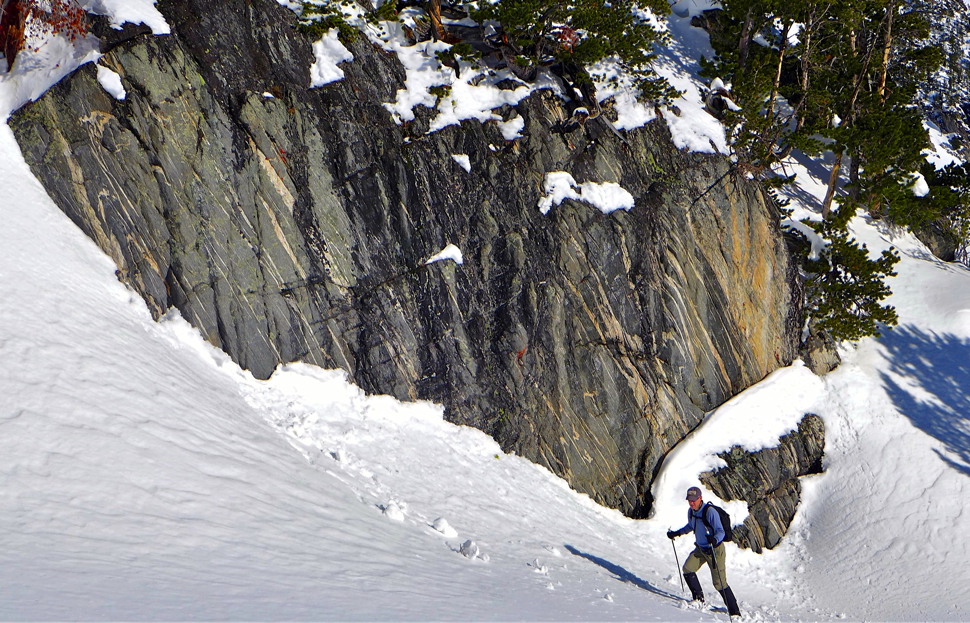|
Nice Basement Rock in Southwestern Montana 
Photo by Lindsey Barnes
Take a closer look.
First things first . . .
This outcropping is located in a cirque called Beehive Basin about 35 miles SSW of Bozeman, Montana. An outcropping is a place where Earth's crust (bedrock) is exposed (not loose rock and not covered with soil, etc.) - usually a steep area. A cirque is a U-shaped mountain valleys carved by an alpine glacier. Point C on this aerial photo marks the location of the outcropping. Once the page opens, zoom out to see the entire valley, and beyond to get a sense of where this place is.
What's so nice about it? . . .
The rock shown in the photo above is a type of metamorphic rock called gneiss (pronounced "nice"). Metamorphic rocks are formed when sedimentary or igneous rock is changed by heat and/or pressure (and in some cases, chemically active fluids). Gneiss can form from several different types of parent rocks, including granite, shale, or volcanic rocks, although most textbooks feature gneiss that was formed from granite (animation). Other common metamorphic rocks include marble (used to be limestone), quartzite (used to be sandstone), and slate (used to be shale).
Not just for butterflies . . .
Most metamorphism happens in one of two geologic settings. In one, heat from magma beneath the surface may "bake" (but not melt) rock, causing minerals in the rock to recrystallize or even form new minerals (diagram). In the other scenario pressure put on rock buried deep beneath the surface or rock near a colliding plate boundary can also cause metamorphism (diagram) . The slow collision of tectonic plates squeezes large rock formations, causing them to become deformed and metamorphosed (photo). The Rocky Mountains formed from this type of slow collision between 80 and 40 million years ago.
Old stuff in the basement . . .
Gneiss makes up most of the lower portion of Earth's continental crust - very old material referred to as "basement rock". In most places basement rock is covered with younger sedimentary rocks. Drill down far enough anywhere on a continent - you will usually strike gneiss. In fact the rock that makes up the mountains in southern Montana, including the gneiss in the photo, are among the oldest in the state - formed during the Archean (Archeozoic) Eon over 2.5 billion years ago. Here, sections of crust were forced upward and many of the younger rock formations eroded away, exposing the basement rock. Today this gneiss makes up many of the mountains in the region, including the Beartooths, the Tobacco Roots, and a significant portion of the mountains in between (map). Compare the locations of the mountains to this map that shows the ages of the rocks (Archeozoic is oldest). Here is a link to a much more detailed geologic map of Montana (enlarge it).
Below: Besides metamorphic, there are two more basic categories of rocks - sedimentary, and igneous. Examples of each are shown near the Missouri River in central Montana (below). The light-colored rock is sedimentary and the dark is igneous.  Term: contact metamorphism, regional metamorphism (in your own words!)
| 





